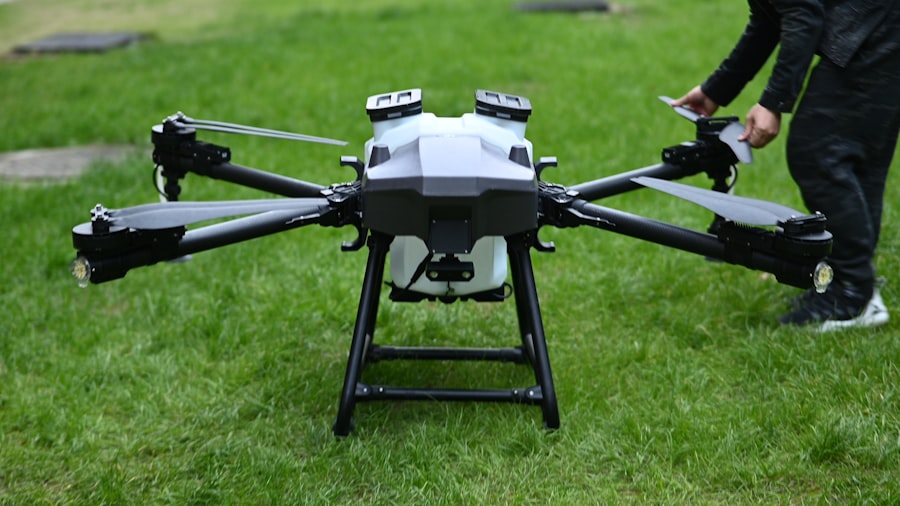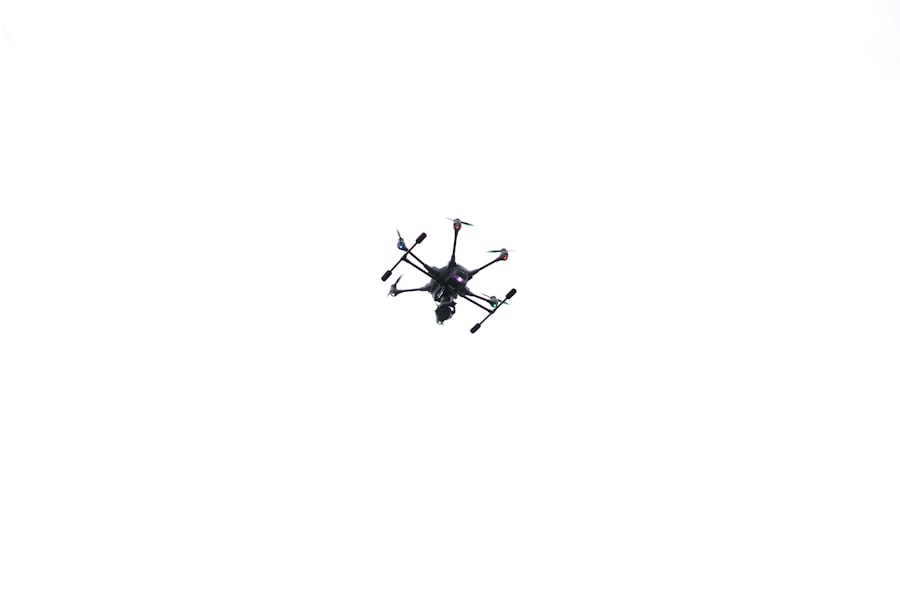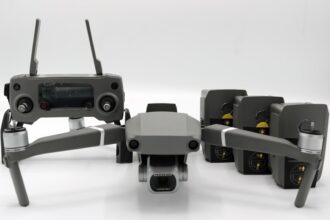The conflict in Ukraine has witnessed a significant transformation in military tactics, largely driven by the integration of drone technology. Initially, drones were primarily utilized for reconnaissance and surveillance purposes, but their role has evolved dramatically since the onset of hostilities. The use of unmanned aerial vehicles (UAVs) has not only changed the dynamics of warfare but has also introduced new strategies and methodologies for both offensive and defensive operations.
As the conflict continues, the implications of drone technology extend beyond the battlefield, influencing international relations and military doctrines worldwide. In Ukraine, drones have become a symbol of modern warfare, showcasing how technology can alter traditional combat scenarios. The rapid adoption of UAVs by both Ukrainian forces and their adversaries has underscored the importance of aerial capabilities in contemporary conflicts.
This evolution reflects a broader trend in military engagements, where technological advancements dictate the pace and nature of warfare. As both sides adapt to the changing landscape, the role of drones is likely to expand further, shaping the future of military operations in Ukraine and beyond.
Key Takeaways
- Drone technology has played a significant role in the Ukraine conflict, impacting military strategy and civilian populations.
- Drones are used for surveillance, intelligence gathering, targeted strikes, and attacks, providing valuable information and tactical advantages.
- The use of drones has raised ethical and legal considerations in warfare, prompting discussions on international laws and regulations.
- Countermeasures and defense against drones have become crucial in the conflict, with efforts to develop effective strategies to mitigate their impact.
- The future implications of drone technology in the Ukraine conflict are likely to continue evolving, shaping the dynamics of modern warfare.
Role of Drones in Surveillance and Intelligence Gathering
Drones have emerged as pivotal tools for surveillance and intelligence gathering in the Ukraine conflict. Their ability to provide real-time imagery and data has revolutionized how military forces assess enemy positions and movements. Equipped with high-resolution cameras and advanced sensors, UAVs can operate at various altitudes, allowing them to gather critical information without putting personnel at risk.
This capability has enabled commanders to make informed decisions based on accurate intelligence, significantly enhancing operational effectiveness. Moreover, drones facilitate persistent surveillance over vast areas, which is particularly advantageous in a conflict characterized by fluid frontlines and rapidly changing situations. The ability to monitor troop movements, supply routes, and logistical hubs has proven invaluable for both Ukrainian forces and their opponents.
By leveraging drone technology, military leaders can anticipate enemy actions and respond proactively, thereby gaining a strategic edge on the battlefield. This shift towards drone-assisted intelligence gathering marks a departure from traditional reconnaissance methods, highlighting the growing reliance on technology in modern warfare.
Use of Drones in Targeted Strikes and Attacks

The application of drones in targeted strikes has become a defining feature of the Ukraine conflict. Armed UAVs are capable of delivering precision strikes against enemy targets with minimal collateral damage, making them an attractive option for military planners. This capability allows forces to engage high-value targets such as command centers, supply depots, and armored vehicles while reducing the risk to ground troops.
The effectiveness of drone strikes has led to their increased use in various operational scenarios, from counterinsurgency missions to conventional warfare. In addition to their precision, drones offer a level of flexibility that traditional airpower cannot match. They can be deployed quickly and can operate in environments that may be too dangerous for manned aircraft.
This adaptability has allowed Ukrainian forces to conduct strikes against enemy positions with greater frequency and efficiency. However, the reliance on drones for offensive operations also raises questions about the long-term implications of such tactics, particularly concerning escalation and retaliation from adversaries.
Impact of Drone Technology on Military Strategy
| Aspect | Impact |
|---|---|
| Surveillance | Enhanced ability to gather intelligence and monitor enemy activities |
| Targeted Strikes | Precision targeting of enemy assets with reduced risk to military personnel |
| Logistics | Improved supply chain management and transportation of goods |
| Combat Support | Assistance in providing cover and support for ground troops |
| Strategic Planning | Facilitation of strategic decision-making and operational planning |
The integration of drone technology into military strategy has fundamentally altered how conflicts are conducted. In Ukraine, both sides have adapted their strategies to incorporate UAVs into their operational frameworks. This shift has led to a more dynamic battlefield where traditional concepts of engagement are being redefined.
Commanders are now required to consider drone capabilities when planning operations, leading to a more complex interplay between ground forces and aerial assets. Furthermore, the presence of drones has necessitated changes in defensive strategies as well. Forces must now develop counter-drone measures to protect critical assets from aerial attacks.
This evolution reflects a broader trend in military strategy where technological advancements dictate not only offensive capabilities but also defensive postures. As both sides continue to innovate and adapt, the impact of drone technology on military strategy will likely persist, shaping future conflicts around the globe.
Challenges and Limitations of Drone Technology in Ukraine Conflict
Despite their advantages, drone technology is not without its challenges and limitations in the context of the Ukraine conflict. One significant issue is the vulnerability of drones to electronic warfare tactics employed by adversaries. Jamming signals can disrupt communication between UAVs and their operators, rendering them ineffective or even causing them to crash.
This vulnerability highlights the need for robust countermeasures to ensure the reliability of drone operations in contested environments. Additionally, the reliance on drones raises concerns about operational sustainability. While UAVs can provide valuable intelligence and strike capabilities, they require extensive logistical support, including maintenance, fuel, and trained personnel.
In a protracted conflict like that in Ukraine, sustaining drone operations can become increasingly challenging as resources become strained. These limitations underscore the importance of integrating drones into a broader operational framework that includes traditional military assets.
Ethical and Legal Considerations of Drone Use in Warfare

The use of drones in warfare brings forth a myriad of ethical and legal considerations that cannot be overlooked. The ability to conduct targeted strikes with precision raises questions about accountability and the potential for civilian casualties. As drones operate remotely, there is a risk that decision-makers may become desensitized to the consequences of their actions, leading to an increased likelihood of strikes that could harm non-combatants.
International law also plays a crucial role in shaping the discourse around drone usage in conflict zones. The principles of distinction and proportionality must be adhered to ensure that military operations comply with humanitarian standards. However, the ambiguity surrounding drone strikes often complicates legal assessments, particularly when it comes to defining combatants versus civilians.
Countermeasures and Defense against Drones in Ukraine Conflict
As drone technology becomes more prevalent in the Ukraine conflict, both sides have developed countermeasures to mitigate its impact. These measures range from electronic warfare tactics designed to disrupt drone communications to physical defenses such as anti-aircraft systems capable of targeting UAVs. The arms race between offensive drone capabilities and defensive countermeasures has intensified as each side seeks to gain an advantage over the other.
Moreover, the development of counter-drone technologies reflects a broader trend within military circles to adapt to emerging threats posed by UAVs. Innovations such as laser systems and advanced radar technologies are being explored to enhance defensive capabilities against drones. As these technologies continue to evolve, they will play a critical role in shaping the future landscape of aerial warfare in Ukraine and beyond.
Influence of Drone Technology on Civilian Populations
The impact of drone technology extends beyond military operations; it also significantly affects civilian populations caught in conflict zones. The presence of drones can create an atmosphere of fear and uncertainty among local communities, particularly when they are used for surveillance or targeted strikes. Civilians may feel vulnerable to potential attacks or may be subjected to constant monitoring by UAVs overhead.
Additionally, the psychological effects of drone warfare can have long-lasting implications for affected populations.
As such, understanding the broader societal implications of drone usage is essential for addressing the humanitarian consequences of modern warfare.
International Response and Support for Ukraine’s Drone Capabilities
The international community’s response to Ukraine’s use of drone technology has been multifaceted, with various nations providing support to enhance its capabilities. This assistance includes supplying advanced UAV systems, training personnel, and sharing intelligence to improve operational effectiveness. Such support underscores the strategic importance placed on drone technology within contemporary military engagements.
Moreover, international partnerships have facilitated knowledge sharing among nations regarding best practices for drone operations and countermeasures against adversarial UAVs. As countries recognize the transformative potential of drones in warfare, collaborative efforts are likely to increase, shaping future military strategies on a global scale.
Future Implications of Drone Technology in Ukraine Conflict
Looking ahead, the implications of drone technology in the Ukraine conflict are profound and far-reaching. As both sides continue to innovate and adapt their strategies around UAVs, it is likely that drone warfare will become even more sophisticated. The ongoing development of artificial intelligence and autonomous systems may further enhance drone capabilities, allowing for more complex operations with reduced human intervention.
Additionally, as other nations observe the developments in Ukraine, there may be a ripple effect influencing military doctrines worldwide. The lessons learned from this conflict could shape how future wars are fought, emphasizing the importance of integrating advanced technologies into military planning and execution.
The Ongoing Evolution of Drone Technology in Warfare
In conclusion, the integration of drone technology into the Ukraine conflict represents a significant evolution in modern warfare. From surveillance and intelligence gathering to targeted strikes and strategic planning, drones have transformed how military operations are conducted on both sides of the conflict. However, this evolution is accompanied by challenges related to ethics, legality, and civilian impact that must be addressed as technology continues to advance.
As nations grapple with these complexities, it is clear that drone technology will play an increasingly central role in shaping future conflicts around the globe. The ongoing developments in UAV capabilities will not only influence military strategies but also redefine international relations as countries adapt to this new era of warfare. The lessons learned from Ukraine will undoubtedly resonate far beyond its borders, marking a pivotal moment in the history of armed conflict.
Drone technology has played a pivotal role in the ongoing Ukraine conflict, offering both strategic advantages and new challenges on the battlefield. The use of drones has transformed reconnaissance missions, providing real-time intelligence and enhancing the precision of military operations. For a deeper understanding of how drone technology is influencing modern warfare, you can explore a related article on this topic by visiting In The War Room. This resource delves into the implications of drone usage in conflict zones, highlighting both the technological advancements and the ethical considerations that come with it.
FAQs
What is drone technology?
Drone technology refers to the use of unmanned aerial vehicles (UAVs) or drones for various purposes such as surveillance, reconnaissance, and targeted strikes.
How is drone technology being used in the Ukraine conflict?
In the Ukraine conflict, both government forces and separatist groups have utilized drone technology for surveillance, reconnaissance, and even for carrying out attacks.
What types of drones are being used in the Ukraine conflict?
Various types of drones are being used in the Ukraine conflict, including small commercial off-the-shelf drones, as well as larger military-grade drones capable of carrying out more advanced missions.
What impact has drone technology had on the Ukraine conflict?
Drone technology has had a significant impact on the Ukraine conflict, providing both sides with valuable intelligence and the ability to carry out targeted strikes, leading to a shift in the dynamics of the conflict.
Are there any regulations on the use of drones in the Ukraine conflict?
There are no specific regulations on the use of drones in the Ukraine conflict, leading to concerns about the potential for misuse and the need for international oversight.




